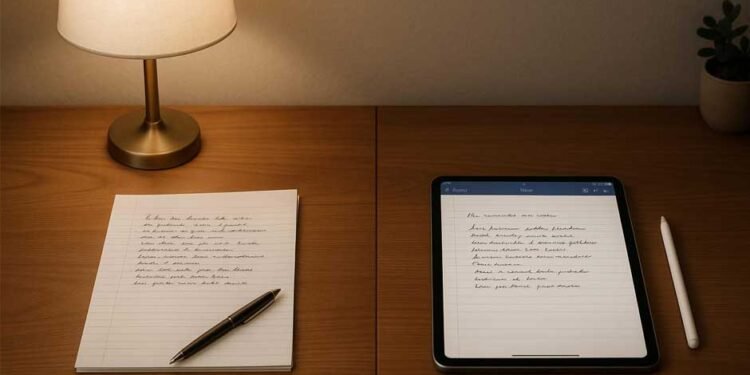Accurate recordkeeping has always been a cornerstone of good governance. In every boardroom and executive meeting, notes serve as the official record of what was discussed, decided, and delegated. But in a fast-moving, digital-first world, handwritten or scattered notes are no longer enough.
Today, leadership teams need documentation that is secure, searchable, and accessible. That’s where digital note-taking and meeting documentation tools come in. They’re helping organizations strengthen compliance, improve accountability, and make transparency part of everyday governance.
The Importance of Accurate Meeting Records
Meeting notes are more than just a recap. They’re a legal and operational record of how decisions were made and who made them. In the eyes of regulators, investors, and auditors, they provide proof that governance processes were followed and that directors acted in the best interest of the organization.
Platforms like Board Intelligence make this process more reliable by ensuring that every discussion, decision, and action item is documented accurately and securely. Poor documentation can create serious risks. Missing details or inconsistent records can expose companies to compliance violations or disputes about board decisions. Conversely, clear and consistent notes show a pattern of accountability, which builds trust both inside and outside the organization.
The Shift to Digital Documentation
For many years, meeting minutes were typed manually and stored in folders or shared drives. While functional, that approach doesn’t meet modern standards for security or efficiency. Digital note-taking systems are replacing this process with centralized, cloud-based tools that make records more reliable and accessible.
These platforms provide a secure environment where notes, action items, and supporting documents are stored together. Authorized users can review historical discussions instantly without sifting through old files or emails. This centralized system ensures that compliance and transparency are built into every meeting, not treated as afterthoughts.
Why Digital Notes Improve Compliance
Compliance isn’t just about following laws—it’s about demonstrating that the organization is doing so. Digital notes make that proof easy to show. Each entry is time-stamped, version-controlled, and linked to specific agenda items or meeting decisions.
When regulators or auditors request documentation, leadership teams can pull complete records within minutes. The system tracks edits and authorship, ensuring the integrity of every note. By creating an unbroken chain of evidence, digital records protect both the organization and its directors from uncertainty or misinterpretation.
Building Transparency Across the Organization
Transparency begins at the top. When leadership teams share clear, consistent records of their decisions, it fosters confidence across stakeholders—from employees to investors. Digital note systems support this by giving approved users controlled access to finalized minutes and action logs.
This visibility strengthens trust. Departments can see how decisions were made and align their work accordingly. Transparency also improves collaboration by connecting board-level discussions with operational execution, ensuring that strategy and action stay in sync.
Reducing Administrative Burden
Traditional note-taking is often time-consuming. After a meeting, administrators or secretaries must decipher handwritten notes, type them into formal minutes, review them for accuracy, and distribute them manually. Mistakes or omissions are easy to make in the process.
Digital tools simplify this dramatically. Notes can be taken directly within the platform during the meeting, automatically formatted, and linked to agenda items. Many systems also integrate with transcription tools that capture conversations in real time. This automation reduces errors and speeds up turnaround time, allowing teams to finalize minutes while the discussion is still fresh.
Ensuring Secure Access and Storage
Security is a major factor in governance documentation. Sensitive discussions about finance, risk, or personnel require strict control. Digital note platforms use encryption, access permissions, and audit trails to keep this data safe.
Only authorized users can view or edit notes, and all activity is logged for accountability. Even if a device is lost or stolen, the data remains protected within the cloud environment. For leadership teams managing confidential information, this level of protection is essential.
A purpose-built meeting minutes software solution provides all of these safeguards in one place. It allows directors and executives to collaborate on notes securely, share finalized versions instantly, and maintain a compliant record of every meeting. This balance of accessibility and protection is what makes digital notes so powerful.
Creating Clear Audit Trails
Audit readiness is a constant concern for organizations, especially those operating in regulated industries. Digital systems automatically create audit trails that document every interaction with meeting records—who viewed, edited, or approved them.
This eliminates guesswork during internal or external audits. Instead of searching through email threads or file archives, teams can present a complete timeline of decisions and approvals. Auditors gain confidence in the process, and organizations save time that would otherwise be spent on manual evidence collection.
Improving Accuracy and Consistency
Human error is inevitable when note-taking is manual. Details get missed, decisions are paraphrased incorrectly, or updates are delayed. Digital notes minimize these risks by providing real-time collaboration and structured templates.
Every agenda item, discussion point, and outcome follows a consistent format. This not only makes notes easier to read but also ensures that critical information isn’t left out. Consistency across meetings also helps leadership teams identify recurring themes, track performance, and monitor how decisions evolve over time.
Bridging the Gap Between Meetings and Execution
Compliance and transparency don’t end when the meeting adjourns. What happens afterward—how decisions are implemented and tracked—is equally important. Digital note systems bridge this gap by linking meeting outcomes to action items and follow-up tasks.
When each task is assigned and tracked within the same system, it’s easier to monitor progress and maintain accountability. Directors can see which items are pending, which are complete, and whether deadlines are being met. This ongoing visibility reinforces both compliance and operational discipline.
The Broader Benefits for Governance
Beyond compliance, digital notes elevate the overall quality of governance. They enable better preparation, faster follow-up, and clearer communication across leadership teams. Directors spend less time managing paperwork and more time analyzing insights that drive performance.
Transparency improves not just external trust but also internal collaboration. When decision-making processes are clear, teams feel more connected to leadership priorities. That clarity trickles down through every level of the organization.
Final Thoughts
Digital notes are redefining how organizations maintain accountability and integrity. By moving beyond paper-based systems, leadership teams can document decisions with precision, share information securely, and demonstrate compliance effortlessly.
The shift isn’t just about convenience—it’s about protecting reputation, strengthening trust, and building governance frameworks that meet the demands of a connected world. With the right meeting minutes software, boards and executives can achieve full visibility and compliance without sacrificing efficiency.
In a business environment where transparency is currency, digital note systems ensure that every decision, action, and outcome is recorded with clarity and confidence. That’s how modern leadership turns documentation into a strategic advantage.












